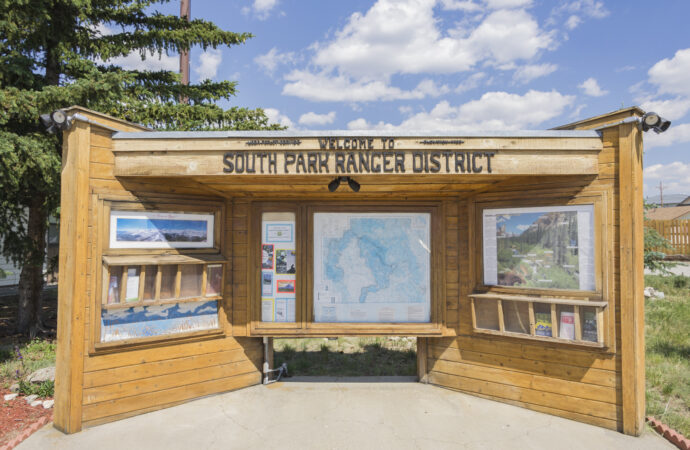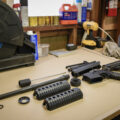While controversy swirls around the amount of land occupied by the federal government, the public status of land used by the Bureau of Land Management, National Park Service and United States Forest Service presents opportunities for shooting spaces and range time for target shooters savvy enough to know the laws.
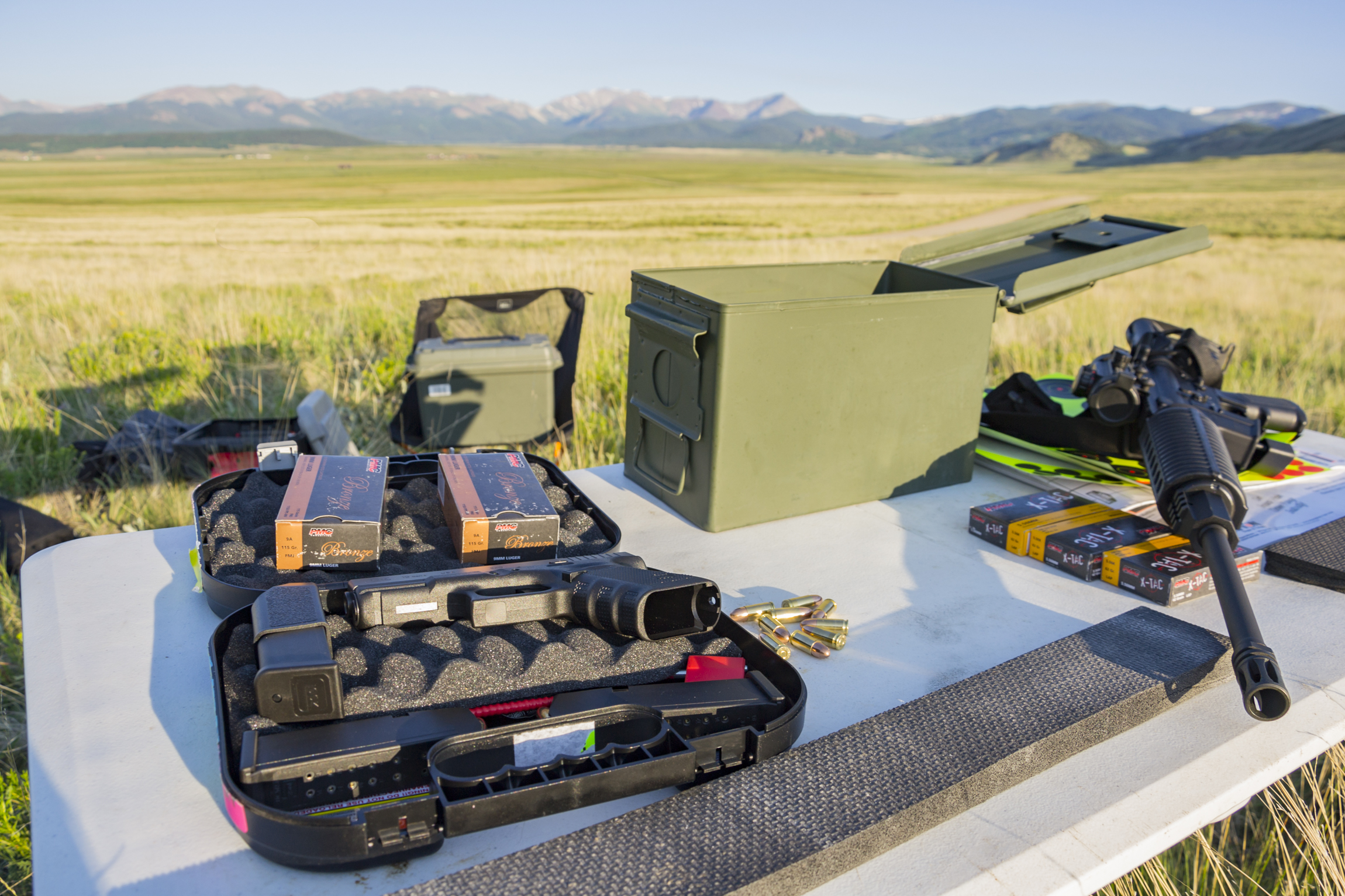
U.S. public land agencies have welcomed firearm target shooting and other shooting activities for generations. With this welcoming, the need for firearm shooting rules, regulations and ethics has grown steadily, in order to help protect the public, our environment, and natural resources. One of the most popular public land agencies, the U.S. Forest Service (USFS), that falls under the Department of Agriculture, has its own firearm target shooting rules and regulations that have been developed since its founding.
In this article, you’ll learn the target shooting rules and regulations for US Forest Service public land. Then, we’ll explore two codes of ethics, “Leave No Trace” and “Tread Lightly” that directly pertain to the preservation of the environment and natural resources while participating in outdoors recreational activities, such as firearm target shooting on public land. Lastly, I will give some tips from my personal experience on how to have a more safe, responsible, and enjoyable day of target shooting on USFS lands.
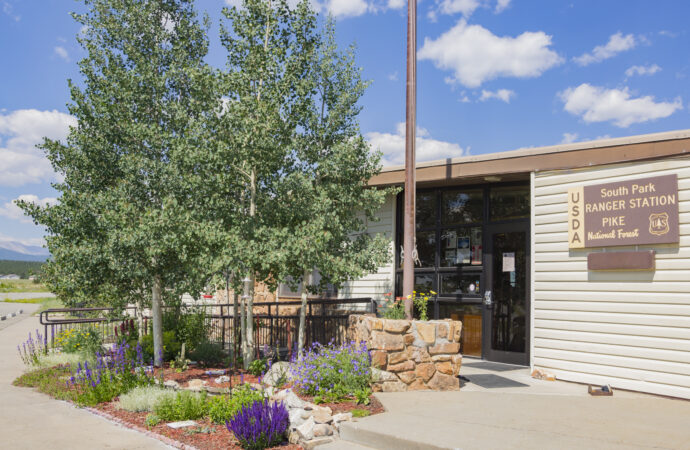
U.S. Forest Service public lands are some of the most visited public areas in the country, especially in the Western United States. In order to better manage and care for these public lands and those who visit them, there are federal, state, and county firearms shooting laws that need to be followed. Besides general federal rules, regulations and ethics, the USFS sometimes has specific regional and district rules, regulations and ethics. You can easily learn these these rules by visiting the Ranger District office, website, or by calling for the particular area where you will be shooting. You can visit this USFS Directory to find the specific website and/or contact information for the Forest Region and Ranger District you will be visiting. USFS district maps and other literature will sometimes contain this information as well.
It’s always a good idea to call ahead or check the Forest District website you are going to visit, especially if you have a long drive or are going to show up late at night, and not have a chance to stop by the Ranger Station. Occasionally, certain areas may have closures, shooting ranges may be closed, and/or shooting may be temporarily suspended due to high wildfire potential, wildlife conservation actions, etc. Also, USFS Ranger Districts will occasionally encompass and manage a designated Wilderness Area, which may actually be the specific area where you want to visit. Here, the Regional Forest or Forest Supervisor can, “implement a special local order which additionally prohibits the mere possession of a firearm within that Wilderness Area”.
Beside the need to follow state and county rules and regulations as discussed above, there are a few regulations specific to firearm use that are universal on all USFS public lands. The USFS wants you to, “Know Before You Go,” so that you have a fun and safe experience and can help protect and keep our public land natural and beautiful. Here you can find a list of rules for target shooting that the USFS wants you to, “Know Before You Go”.
What To Know Before Shooting On Forest Service Land
Below are some important universal rules to know for target shooting on USFS public land:
- You cannot discharge a weapon within 150 yards of any structure/development or occupied area, within or into a cave, across or on a road or body or water, or in any manner that endangers a person.
- Also, you cannot use any tracer or incendiary ammunition or explosive targets.
- Forest Service regulations require that you also comply with all State laws regarding the use of firearms while hunting.
- All other federal laws and regulations pertaining to weapons must be followed, such as those under the Bureau of Alcohol, Tobacco, Firearms, and Explosives (ATF).

Of course, the Forest Service also insists you follow the standard rules of the shooting range that you’re likely already familiar with:
- Treat every gun as if it is loaded.
- Never let the muzzle of a firearm point at anything you don’t intend to shoot.
- Always, keep your finger off of the trigger until you are sighted in on your target and ready to shoot.
- Know exactly what your target is and what is beyond that.
In addition, the USFS rules require that you never shoot from a vehicle, and remember; you are never allowed to be in possession of an alcoholic beverage while discharging a firearm.
The USFS encourages the use of designated shooting areas and ranges. This aims to help protect natural resources and facilities, and reduce litter, such as targets, wads, and shells, brass, and other refuse. Firearm litter can and does harm natural ecosystems, in turn harming natural resources such as fish and wildlife. Not to mention you can get a fine up to $250.00 for leaving any litter on the ground including shells, casings, wads, etc. By sticking to those designated shooting areas and ranges you won’t disrupt other outdoors enthusiasts or wildlife, and those range areas help with controlling public safety by keeping shooting in certain areas.
If you do want to target shoot in a non-designated area, be sure the target zone is free of rocks as ricochet sparks can cause wildfires. Also, always know what is beyond your target. Place your target in front of a natural “backstop”, such as a hillside or dirt cliff or bluff, so that you can see exactly what is behind your target. Trees and bushes are never a good backstop. If you are not sure of where to go for target shooting, ask the Ranger District office for the forest you are visiting where a proper, safe, and legal place to target shoot is.
Shooting In Bureau of Land Management (BLM) Areas
The Bureau of Land Management (BLM), under the Department of the Interior, another popular public land agency, shares similar if not the exact same firearm rules and regulations as the USFS, and just like on USFS land, federal, state, and county firearm carry concealed carry, and shooting laws need to be followed. For a general rule of thumb, USFS land is almost always in forested and mountainous landscapes, while BLM land is often in more desert landscapes, but not always.
Safe Shooting In National Parks
As of 2010, the National Parks Service (NPS), also under the Department of the Interior, now permits visitors to carry firearms for personal protection. Though, just as with USFS and BLM land, federal, state, and county firearm carry, concealed carry, and shooting laws always apply. For example, some states do not permit firearms in parks at all; therefore this law would apply in National Parks in those states. Firearm carry may be allowed in National Parks, though shooting firearms is almost never allowed as this disturbs wildlife, visitors, and can potentially harm natural resources. Also, specific National Park lands sometimes do not permit firearms at all due to the specific rules and regulations of that park. Remember to always research the firearms rules and regulations for the specific BLM lands or National Parks you plan to visit, as well as the state and county laws that also apply there.
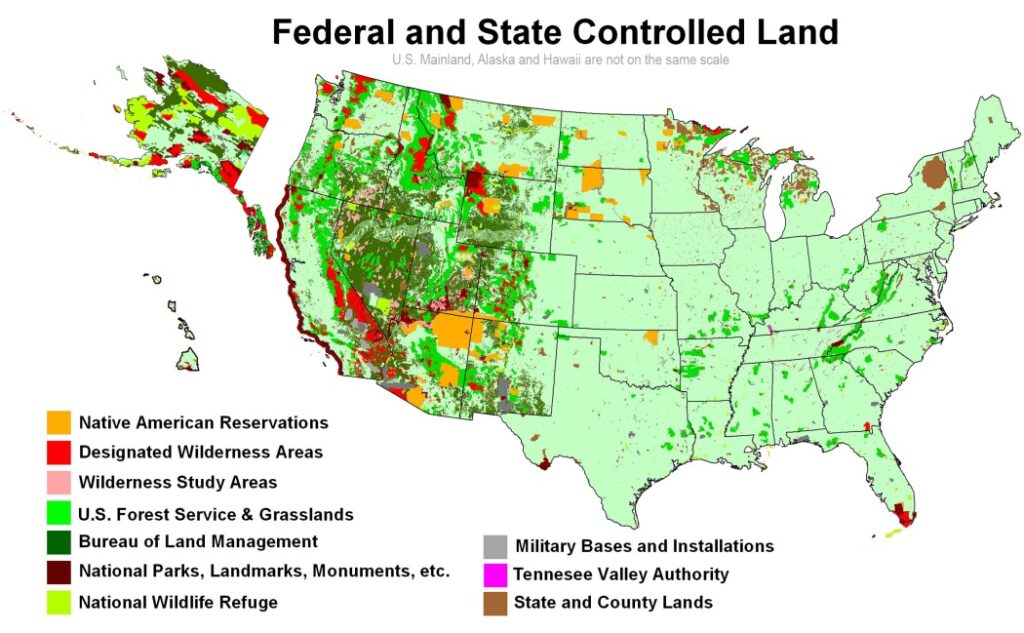
There are two codes of ethics that will help keep our public lands clean: Leave No Trace (LNT) and Tread Lightly. These codes are nationally recognized by public land and conservation agencies, because they have proven track records for helping to protect natural resources and the environment.
Leave No Trace’s mission is, “To protect the outdoors by teaching and inspiring people to enjoy it responsibly,” and their Seven Principles are as follows:
Plan Ahead and Prepare
- Travel and Camp on Durable Surfaces,
- Dispose of Waste Properly (Pack It In, Pack It Out),
- Leave What You Find,
- Minimize Campfire Impacts,
- Respect Wildlife,
- Be Considerate of Other Visitors.
Tread Lightly’s goal is, “to balance the needs of the people who enjoy outdoor recreation with our need to maintain healthy ecosystems and thriving populations of fish and wildlife.” By learning and following the ethics of these two organizations, firearm enthusiasts can do their part in protecting the natural resources, environment, and ecosystems in which they shoot.
Tips for an Easy Public Land Range Trip
The following are a few tips from the USFS that you can use to help protect the public, the environment, and natural resources while firearm target shooting. Never use metal targets as ricochet sparks can cause wildfires. Never use targets that produce non-biodegradable litter, such as plastic boards, metal, glass, and/or other materials that are able to shred into small micro-trash and never use glass bottles as targets. Use targets made of soft biodegradable materials, such as cardboard and paper. Do not place targets on wood backers such as boards or lumber. Always use permitted targets with a safe, bulletproof backstop such as a dirt hill. Never attach targets to trees, logs, brush piles, fences, or water tanks, as this is destruction of natural resources and private property and also has more potential to start a wildfire. Also, exploding targets are never permitted on any forest or grassland.
Besides knowing the rules and regulations of target shooting on public land, there are many tips that will make any day of shooting more safe and enjoyable for the entire family. Just as you would for any outdoor activity, know the terrain, environment, and weather forecast for the area you will be shooting before you go and prepare accordingly. If it’s going to be a hot summer day, maybe start in the early morning or later in the evening, or bring a pop-up awning to provide some shade. Just always be sure you are able to clearly see your targets and don’t shoot before or after daylight hours. Always hydrate, wear the appropriate clothing, and use sunscreen and bug spray as needed. A good way to stay organized is to bring a small fold out table. Here you can easily manage and maintenance your firearms and accessories and keep your ammunition organized. Also, bring chairs, water, and some snacks, so you can make your day of target shooting as enjoyable as possible.

Users of USFS and other U.S. public lands need to follow and help spread awareness about the rules, regulations, and ethics of firearms target shooting in order to help protect the public, the environment, and natural resources. By understanding federal, state, and county rules and regulations, USFS “Know Before You Go”, and ethics “Leave No Trace” and “Tread Lightly”, everyone can have a more safe, responsible, and enjoyable day of shooting on USFS public land. U.S. public land is for everyone, so we should all use it wisely.
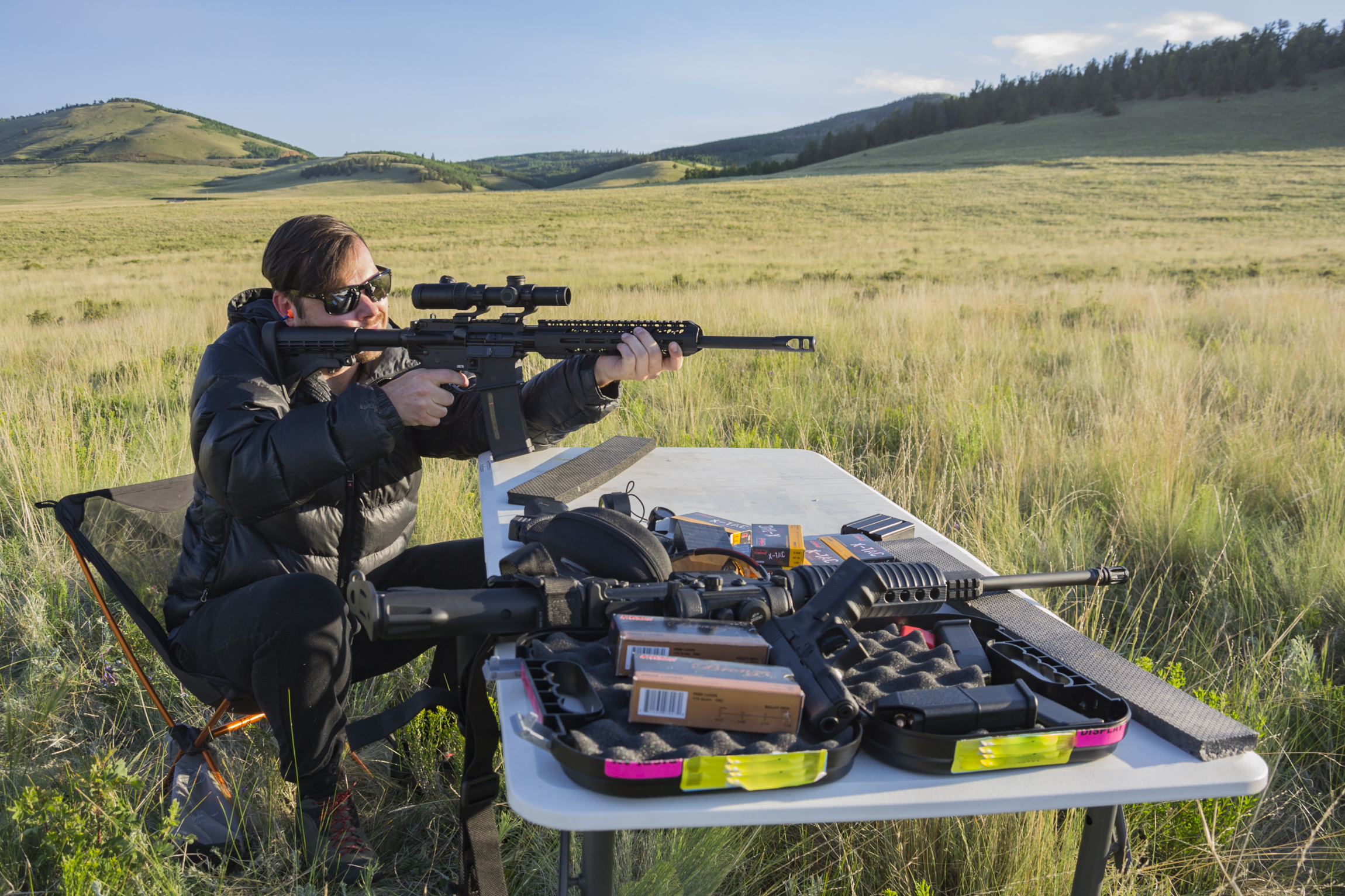
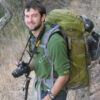
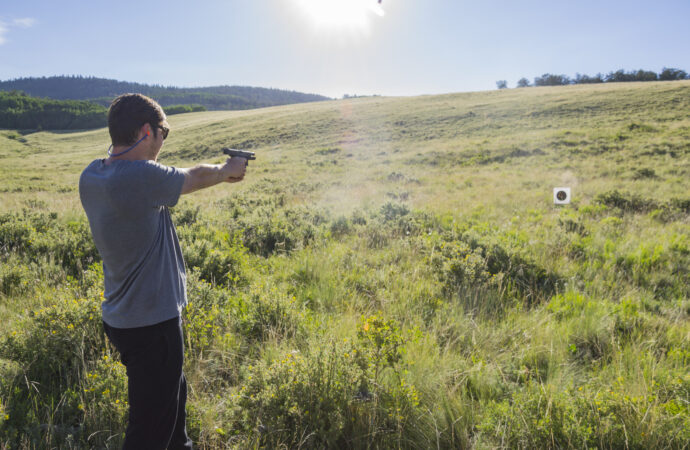
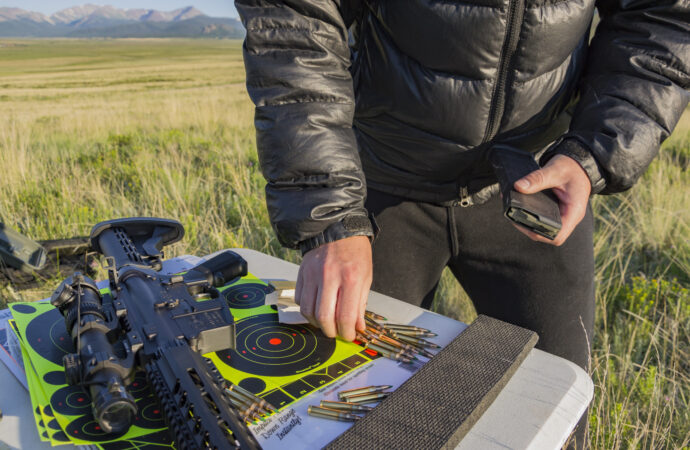
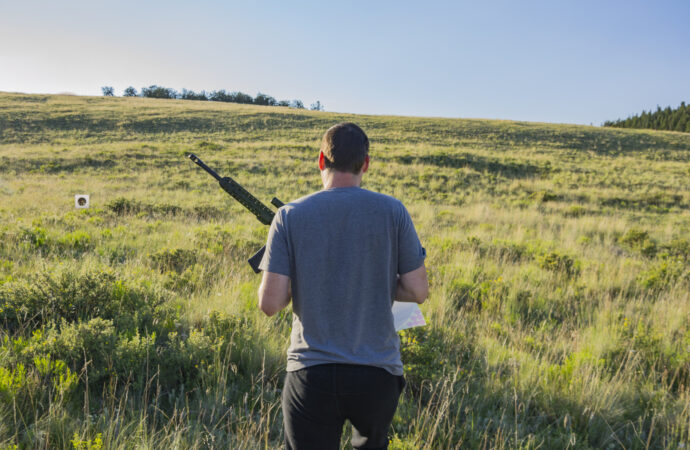 Plan Ahead and Prepare
Plan Ahead and Prepare